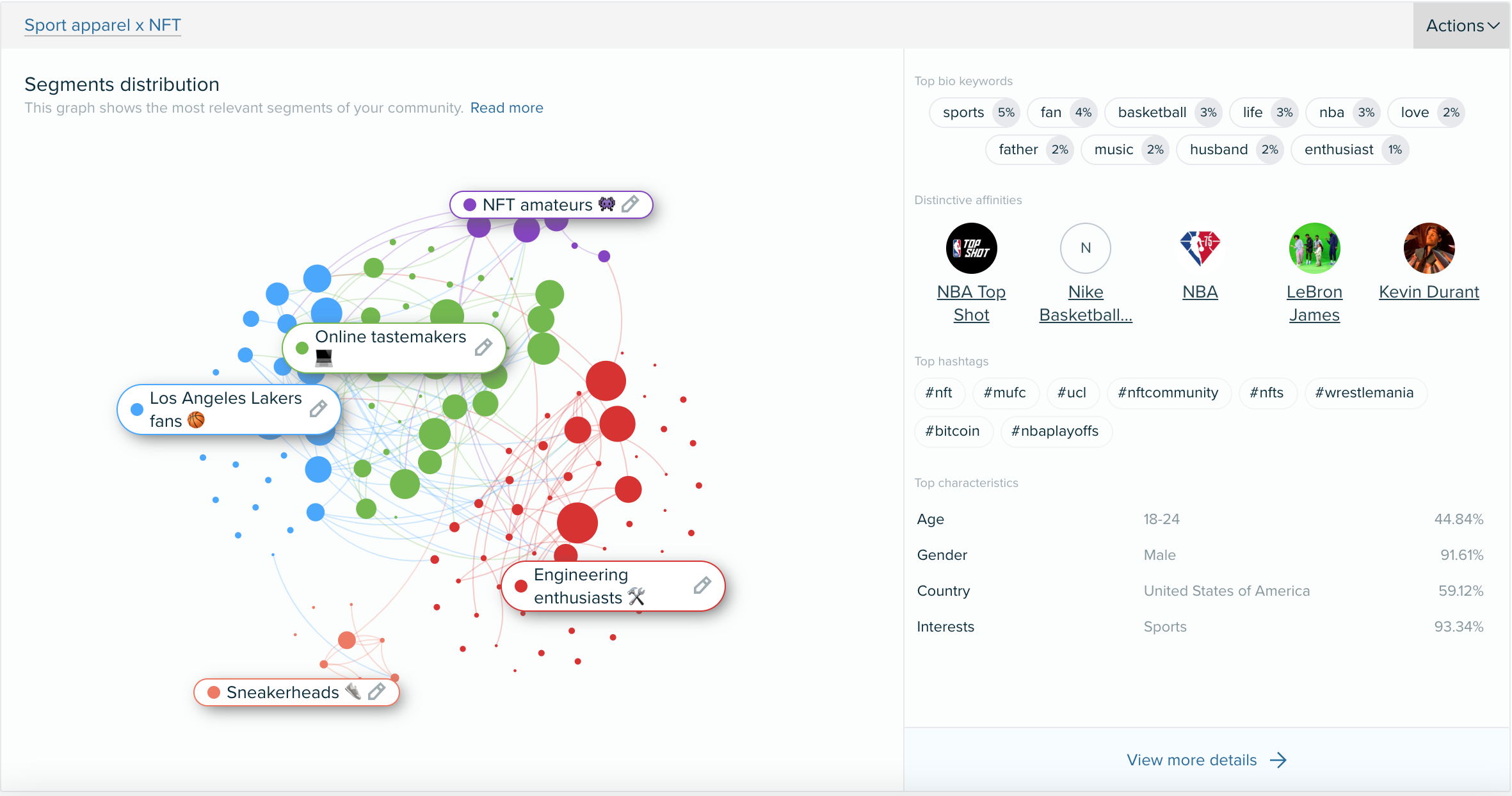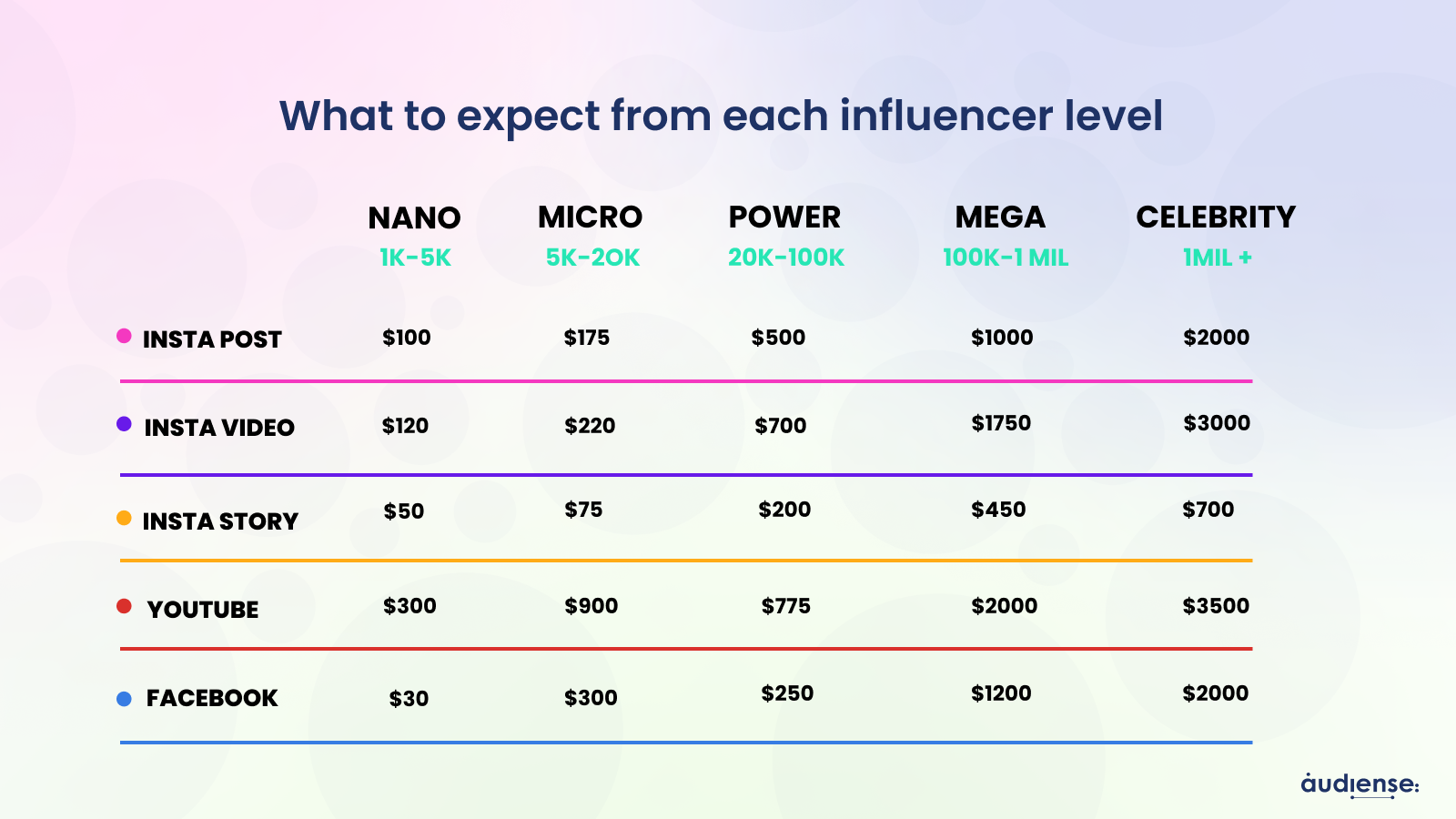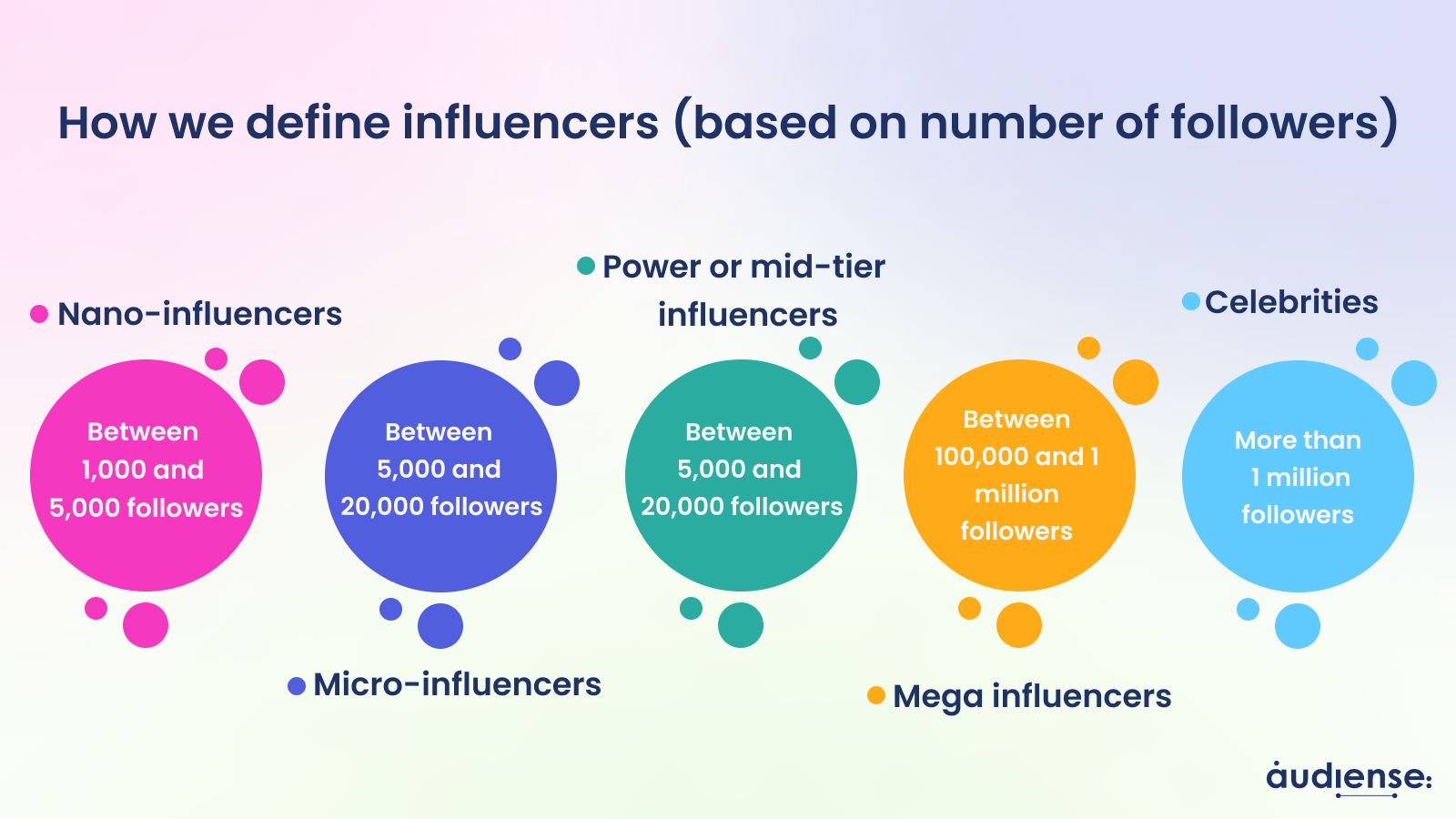How to create a killer influencer marketing strategy no matter your budget
When Warby Parker was looking to turn granny glasses into the hot new thing, they used influencers to increase engagement, awareness, and interest. The authenticity and genuine interactions between smaller influencers and their audiences generated a 4% engagement rate that reached 800,000 new potential customers.
Did you know that 61% of consumers trust influencers’ recommendations while 38% trust branded social media content?
Influencer marketing has taken over online marketing. People look to someone they trust before making a purchase. When they get an unfiltered look into the lives of people they like or admire using your product, they’re far more likely to believe in its benefits.
Developing an influencer marketing strategy is a key component of a killer overall marketing strategy. Smash your revenue targets and develop a powerful brand with this How-To Guide to influencers.
The key to a great influencer marketing strategy is great audience data
When you know your audience, your marketing strategy practically writes itself. With clearly defined goals and an in-depth look into your target market, you can begin exploring the best influencers to serve your business.

Who is your audience? What are they talking about? They could already be following the perfect influencer to meet your needs. You might also be able to find potential influencers that already follow you – regular people who have a following and love your product. With a little more information about your demographics, you can use deep segmentation to find high-value opportunities your competitors are missing.
So, how do you find the potential influencers most relevant to you? By exploring influencer spaces and checking out who’s using hashtags relevant to your brand, scanning your competitors for influencers they may be using, and recruiting through your website or LinkedIn pages with forms for potential influencers to fill out.
After generating a comprehensive list of the influencers who align with your marketing goals and brand, you can start reaching out with offers to collaborate.
Not all influencers are created equal
While you might think we’re talking about the number of followers these influencers have, what we actually mean is their brand alignment, voice, and engagement.
For example, you might find an influencer with millions of followers, but they aren’t known for their expertise in your industry. Or they don’t engage with their comments or messages. These types of influencers are considered less trustworthy than those who actually talk to their fans on a more personal level. Engagement is much more important than followers here.
Choosing the right influencers will make or break your strategy. So take your time to research your options. With the right influencers on your side, you’ll see increased reach, improved credibility, and great ROI.
Shifting from celebrity influencers to micro/nano influencers
Many companies are moving away from celebrity influencers to regain their audiences and project more authenticity from their brands. Many are seeing more success with nano and micro-influencers than ever before.
Dyson
When Dyson was looking for the perfect target audience to expand its market, pet owners were the top contenders. Unsurprisingly, pet influencers take up a lot of the social media market and hold powerful sway over their followers. Using nano-influencers, some of which only had 2,500 followers, Dyson relied on influencer engagement and creativity to increase sales.
With a loose brief that simply required a little humor from influencers as they cleaned up after their beloved pets, this Dyson campaign enjoyed one million views, 115k likes, and an overall engagement rate of 10%.
Iceland
One company that saw massive success with the reach of micro-influencers is Iceland. This UK-based food company used celebrity influencers for its marketing strategy and saw a plunge in approval ratings. The brand revamped its strategy with a transition to regular-Joes to get some more authentic user-generated content.
After a year-long campaign, they saw a retention rate nearing 60% among their customer base and a massive increase in approval ratings from 10% to 70%.
What defines each influencer level
So what are the defining characteristics of each type of influencer? Check out the breakdown below:
- Nano-influencers: between 1,000 and 5,000 followers. Nano-influencers are considered more trustworthy than traditional spokespeople, they’re extremely cost-effective, and they usually have a very strong bond with their followers. However, they have a limited reach, and managing a long roster of multiple influencers can be exhausting.
- Micro-influencers: between 5,000 and 20,000 followers. Like nano-influencers, micro-influencers are perceived to be among the most authentic and trustworthy spokespeople. They also offer higher engagement in ultra-niche industries for minimal investment. Unfortunately, finding the ideal micro-influencers requires more work and research from marketing specialists and companies for less brand awareness and reach.
- Power or mid-tier influencers: between 20,000 and 100,000 followers. With slightly more reach, the mid-tier influencer is the happy medium between nano-influencers and celebrity spokespeople. They’re easy to contact and have a loyal, well-segmented community. While most of these influencers are affordable, you can expect a lot of variation in pricing. You might also find that this influencer tier is more willing to spread themselves thinly, marketing multiple brands (and possibly your competitors) to get to the next influencer level and break 100k followers.
- Mega influencers: between 100,000 and 1 million followers. So obviously, mega influencers have massive reach and will provide more impressions than any of the previous tiers. They’re experienced campaigners that offer more instant exposure in a single post. On the downside, it can be extremely expensive to secure their contracts and they don’t provide as targeted of an audience for your brand.
- Celebrities: more than 1 million followers. Depending on the celebrity, partnering with someone famous for your marketing campaign could provide a massive credibility boost for any brand. It makes a business stand out and instantly introduces it to multiple new markets all at once. However, choosing a celebrity influencer can also be risky, as celebrities may change their image or become embroiled in scandal. They may also overshadow your brand, cutting out brand recognition in favor of celebrity recognition – especially if they’re endorsing multiple brands at the same time. Celebrity influencers also come with a hefty price tag. For example, Pepsi shelled out $50 million for a 10-year deal with Beyonce.
Build a mutually beneficial partnership
If you’ve been applying our guide up to this point, you should have a few names on your list that mesh with your brand identity. Now it’s time to put Audiense to work and find what kind of content resonates with your target audience in order to collaborate with influencers to ensure a successful campaign.
What can Audiense show you?
Anyone who already uses Audiense knows that our platform provides a ton of affinity data that can help you discover what your audience is interested in besides your products or services. You can pull reports that link a specific influencer to your brands and explore basic audience demographics, as well as:
- Other influencers and brands they follow
- Their top interests, like movies, sports, and books
- Media affinity, including television channels, magazines, events, and places
- Top hashtags and mentioned users on social media
- Buying mindset and online habits
- Audience personality insights
Create an audience-centric campaign for both your audience, as well as your influencer’s audience.
Bringing Audiense data to your collaboration
When you reach out to an influencer for a collaboration, it’s best to have a plan ready to go – even if you won’t be sharing all the details with your influencer list right away.
Reach out to influencers with an offer that includes a general overview of your brand and company, and why you think they’d be a good fit.
If they express interest, you can schedule a meeting to discuss details like compensation, marketing strategy, post suggestions, timeline, and goals which you prepared ahead of time.
(Just keep in mind that the final details of your collaboration may differ from influencer to influencer depending on their audience, experience, rates, and schedule.)
Your template may look something like this:
Hello {First Name of Influencer or Handle},
I’m [Name] with [Company Name]. We’re a [Business Description] company, and we [What You Do]. Someone on our team saw one of your recent posts promoting [Brand] and suggested that we reach out for a collaboration.
We’re looking for people like you to partner with us and help spread the word about [Company Name]. We think you’re a good match for us because [List of Reasons].
Is that something you’d be interested in pursuing?
Let me know if you’re available and we can schedule a call to discuss compensation, strategy, and timeline further.
Thanks,
[Name]
Make your initial message personalized and detailed. For example, look into the influencer’s previous posts and call out specifics to show that you’ve done your research. Or, check out all their platforms and specify which ones would work best for your campaign.
How much should you spend on influencers?
Compensation for influencers depends on a number of factors related to your specific campaign, but we can provide a few guidelines to help you generate an initial offer. Some influencers already have a schedule of rates available, but you can always negotiate based on your marketing strategy. Some of the more traditional forms of payment for influencers include:
- Payment per post
- Free products as payment
- Commission on total sales
- Licensing fees
To give you an idea of what you can expect from each influencer level, consider this graph:

There is some variation among these average prices depending on the exact number of followers, frequency of posting, and length of contract. Some influencers may be willing to accept lower rates in exchange for more consistency.
Maximizing your marketing budget
If you have a smaller marketing budget to dedicate to influencers and social media, the best strategy to take is specificity. Plan out your campaigns in as much detail as possible to help create estimates of what it would take to reach your goals and where you need to allocate your funds. Consider these sample budgets to guide your own program:
Under $50,000
- Dedicate 50% of your funds to influencers. Consider nano and micro-influencers first.
- Use 25% of your budget for paid media. Target only the platforms your audience uses.
- Put the final 25% of your budget into building ratings and reviews on e-commerce sites.
$75,000 to $500,000
- Dedicate only 20% of your budget to influencers. Talk to power influencers first.
- Use 25% of your budget on paid media, including Facebook, Instagram, and TikTok.
- Put 15% of your budget towards ratings and reviews, providing nominal compensation.
- Devote 20% of your budget to analytics, like Audiense, for insight and goal tracking.
- Save 20% of your budget for plus-ups and additional spending at critical moments.
While these strategies show you have to utilize a small budget in conjunction with lower-level influencers, you can still create a campaign with celebrity and mega influencers – even if you don’t have a million-dollar budget. Some strategies that may convince higher-level influencers to lower their rates include:
- Repurposing older content so mega and celebrity influencers don’t have to create anything from scratch
- Schedule a single post with a higher level influencer for a strategic content boost while using nano and micro-influencers more regularly
- Partner with a bigger brand (even your competition) to pool your budget and pay for celebrity content
How to execute your influencer strategy?
If you want to keep your ROI high while immediately redirecting poor-performing campaigns, you need to keep an eye on the impact of your influencer marketing strategy. It can be tough to track the success of an influencer campaign, especially if they aren’t promoting direct sales with a specific coupon code.
Some marketing experts track influencer success by reach, impressions, and engagement. In addition to more traditional analytics tools that measure these, we also recommend staying in close contact with your influencers to see if they’re noticing any significant trends. They can offer on-the-ground feedback about which posts tend to resonate with audiences or what times of day their posts garner more likes.
With all this data, you can reorganize campaigns on the fly to ensure you’re maximizing every post and dollar. You can also make the most of your influencer campaigns by reusing content as much as possible. Reshare their posts on all your platforms, add their posts to your website’s blog, and use their posts for ads.
Key Takeaways
83% of buyers report buying a product or service after first seeing family, friends, or influencers talking about it on social media. With 93% of marketing professionals turning to influencers for strategy support, you’re one of the only ones who isn’t taking advantage of this revenue stream!
Tons of brands are already taking advantage of the market: Fabletics managed to increase engagement by 10%, Hulu managed to reach more than 1.3 million people with the help of just one influencer, and Bob’s Red Mill utilized a score of micro-influencers to generate over 2,200 clicks to their website. You can too with these strategies:
- Research audience affinity and interests to find influencers that resonate with your target demographics.
- Balance influencer authenticity, number of followers, and cost for a campaign that maximizes your budget.
- Track campaign progress through analytics to ensure you’re staying on track, and that you can pivot as needed.
- Reuse influencer content through every medium at your disposal to amplify their reach as much as possible.
Get a leg up on your influencer marketing journey, and join these success stories, when you start Audiense free today.







